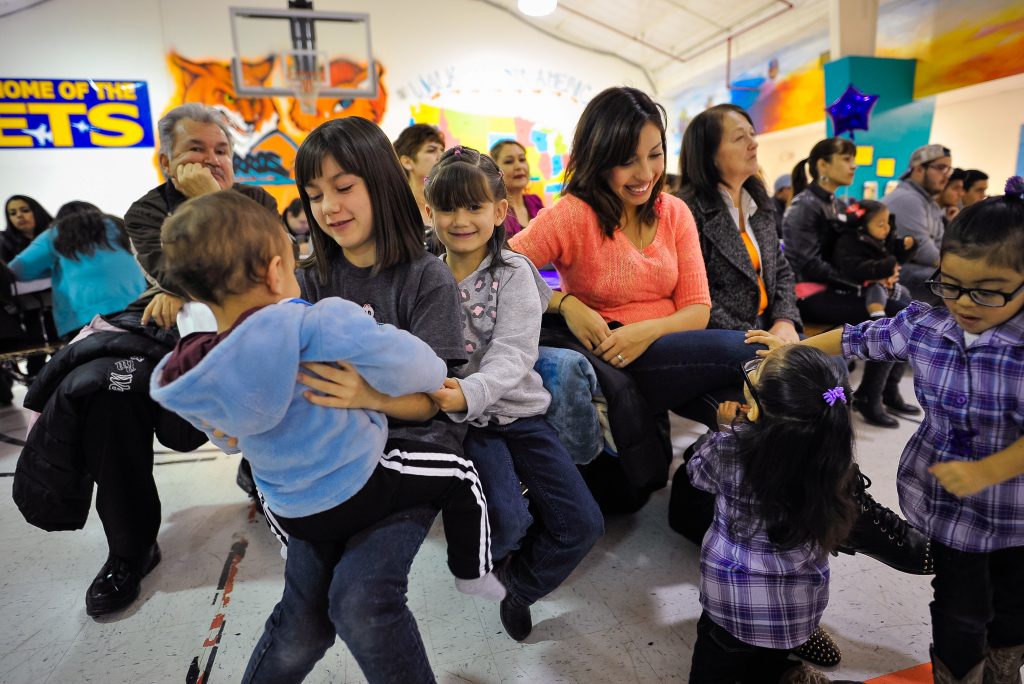Every day we see strategies that are working and delivering results in a rapidly changing world. This Evidence in Action blog series highlights the voices of social innovation organizations and spotlights effective interventions in communities across the country and evidence-based policy and practice leaders to elevate both the results-driven solutions being advanced to help solve our most pressing social problems and to describe the evidence-based federal programs that are critical to developing and scaling effective human and social services. Today we hear from Coalition member Family Independence Initiative (FII) about the impact of their partnership with the Multnomah County Department of County Human Services in Oregon. The following post was written by Mary Li, Division Director, Community Services Division of the Department of County Human Services, Multnomah County, Oregon.

In Multnomah County, Oregon, we are re-envisioning the way government can fight poverty and ensure families here are able to lead economically stable lives.
Inherent in this new approach is the belief that if government policies, practices, and investment helped to create inequity and deny opportunity in local communities, then government has an obligation and the ability to embrace new solutions that restore equity and expand opportunity to eliminate poverty and racial disparities.
This means approaching our work at the County differently, rethinking who we see as the experts, breaking down assumptions we make about who we serve, and showing willingness to invest in new ideas. In our effort to explore and encourage new approaches, the Multnomah County Department of County Human Services (DCHS) created the Multnomah Idea Lab (MIL) as a place to test new policies and innovations that help people and communities thrive.
At the MIL, we are finding ways to address the persistent economic and racial disparities that exist in our county using three approaches. The first is bringing Human Centered Design (HCD) and design practice into the all aspects of County services and operations. HCD centers the experience of the “end-user” in all aspects of our work. The second is critical thinking which we define as listening very well to others’ – thinking, research, questions, experience – and raising these ideas up and into dialog with as many as possible. And third, engaging in applied research tests in the community to explore new ideas and models in the real world.
The one place where we hope to have the biggest impact is in addressing the racial disparity that exists throughout our community especially as we work to fight poverty.
As the largest provider of services and programs in our region, the County does a great job of connecting families with systems of care designed to address services and support, and income and benefit acquisition. Despite delivering excellent services, we have yet to achieve the community level outcomes related to the underlying economic needs of families to which we all aspire. While we are working hard to ease the experience of poverty for families, we have not ended it. There is growing research that in addition to services and income and benefits, families need access to assets and wealth in order to finally leave poverty.
With funding from the state’s Department of Human Services, we are partnering with the Family Independence Initiative (FII) to work with 100 families in Multnomah County and learn about ways to invest in their economic security.
FII is a national nonprofit that trusts and invests in the solutions families create to escape poverty. FII’s ability to capture data, hear directly from families what solutions work for them, and use those stories and data to invest in family-led solutions is the type of innovation we need in Multnomah County.
The families we are partnering with have all recently left the Temporary Assistance to Needy Families (TANF) program and are facing a critical time on their path toward economic security. Using the FII model, families come together in small groups to set goals, support each other, and collectively tap into dollars that allow them to become stable and thrive.
While we are early in our partnership, we are already noticing various positive changes.
We are learning that when families are offered an option that is not punitive, they absolutely respond to it. Families are telling us that they can’t believe we are trusting in their ability to make choices for their own families.
We are learning that we have been approaching the issue of poverty in a less than optimal way. Often, we come up with solutions by making assumptions about the people living in poverty and how they came to be in their situation. By moving to a model in which we question and reexamine our assumptions, we have been able to set up a very different system of support and response.
This partnership will not only inform our County’s response to poverty, but also that of the state, and it will ultimately change the way we invest in solutions. At a time when there is an impulse to move away from government, this partnership is demonstrating that you can instead choose to work with government and call for innovation that challenges how it currently defines its roles and responsibilities in tackling poverty and racial inequity.
This post is part of America Forward’s Evidence in Action blog series. Follow along on Twitter with #EvidenceinAction and catch up on the series here.
Leave a Reply
You must be logged in to post a comment.